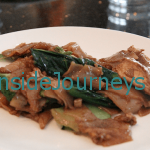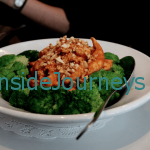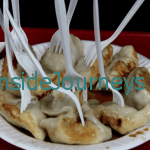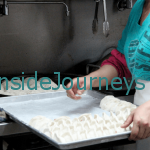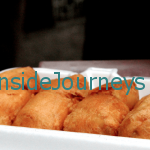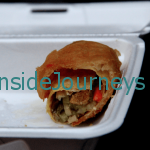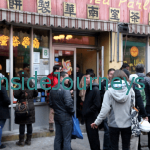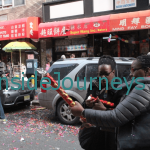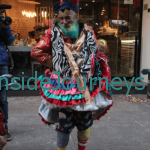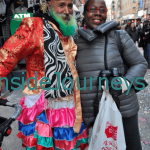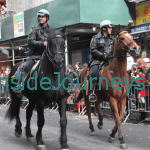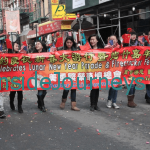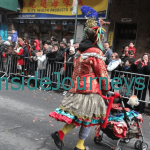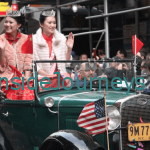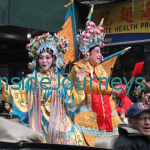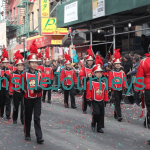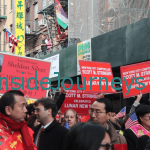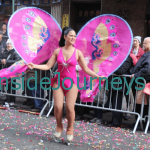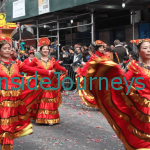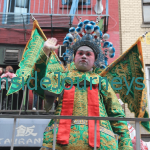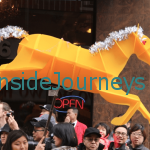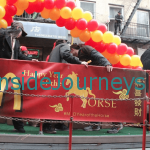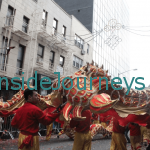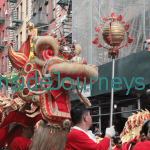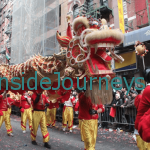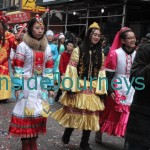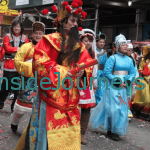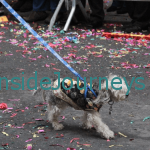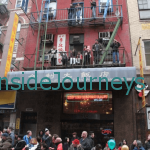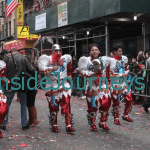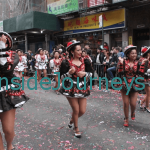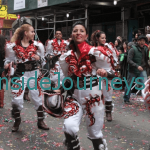I had never heard the term cellar restaurant until Liz of Ahoy New York mentioned it during our walking tour of Little Italy and Chinatown a few weekends ago.
Cellar restaurants are located in the basement of a building. There are two in Manhattan’s Chinatown – Hop Kee at 21 Mott Street and Wo Hop at 17 Mott Street.
Neither was a stop on our tour but I was curious to find out whether there was more to them than their location. After the tour, my friend Joan and I returned to Chinatown. Walking from Canal Street, we arrived first at Hop Kee and decided to try it.
As we descended the steps and entered the restaurant, my eyes landed on a photo of chef and television personality, Anthony Bourdain. Good enough for Bourdain, good enough for me, I thought. My eyes barely scanned the other celebrity photos.

A handful of people occupied a few of the twenty or so tables and the waiter pointed us in the direction of several empty ones. Vinyl covered chairs matched honey-colored laminate wall panels that likely have been there since the restaurant opened in 1962.
I selected a beef with noodle dish. Joan wasn’t very hungry so she ordered a bowl of soup. That’s when our waiter pointed out the required $8 minimum order per diner and we realized we had overlooked the note on the menu.
It wouldn’t have been a problem but like a lot of restaurants in Chinatown, Hop Kee is a cash-only operation and the closest ATM was at least a ten-minute walk away.
Our waiter didn’t look too happy when we decided on one entree but we couldn’t be sure as he wore the same pained expression the entire time he served us. An older guy, he looked as if he’s been working at the restaurant since it opened.
Even with the minimum, when the entrée was ready, he brought two plates. I wasn’t very impressed with the noodles but the portion was so generous, I took most of it home.
As we left Hop Kee, we noticed a line of people leading from street level down to the entrance to Wo Hop, the other cellar restaurant. One couple we talked with said of the two restaurants, the food at Wo Hop was better.
Wo Hop actually has two restaurants on Mott Street, the cellar restaurant and another one at street level. The female of the couple stressed that the upstairs restaurant was for visitors, the downstairs for those in the know.
After our experience at Hop Kee and the couple’s glowing review of Wo Hop, I jumped at the chance to try Wo Hop the following day when I returned for the Lunar Parade.
There were more wait staff than diners in the restaurant when I arrived. One diner, a female NYC police officer, looked like a regular. She sat in a corner with a good view of the door as well as the other diners, which included a party of six who was carrying on a lively discussion at two tables in the back.
The waiter showed me to a table and quickly brought me a menu. I ordered a small hot and sour soup and beef and broccoli entrée.
Wo Hop has been around for 74 years. A small restaurant, it holds about ten tables. The ceiling is low and most of the walls are covered in photos. Like Hop Kee, you wouldn’t find it on the cover of a restaurant décor magazine. But therein lies their charm.
It certainly wasn’t the food although it could have been my selection so I’m willing to give both another try. Wo Hop did not have a posted per diner minimum and they had an ATM machine.
Both Hop Kee and Wo Hop open late on the weekends and, as Liz mentioned, are favorites of college students and late night crowds. It isn’t difficult to see why with such healthy portions and attractive prices.
Wo Hop, at 17 Mott Street is open weekdays from 10:00 a.m. to 1:00 a.m., and to 7 a.m. on weekends. Hop Kee is open till 1:00 a.m. during the week, to 4:00 a.m. Friday and Saturday.
How to join the #FoodieTuesday linkup –
- Add the link to your foodie post in the link tool at the bottom of this post
- Leave a comment.
- As a courtesy, please include a link back to this post.
- Tweet, G+, Like, etc., using the hashtag #FoodieTuesday
[inlinkz_linkup id=376273 mode=1]




